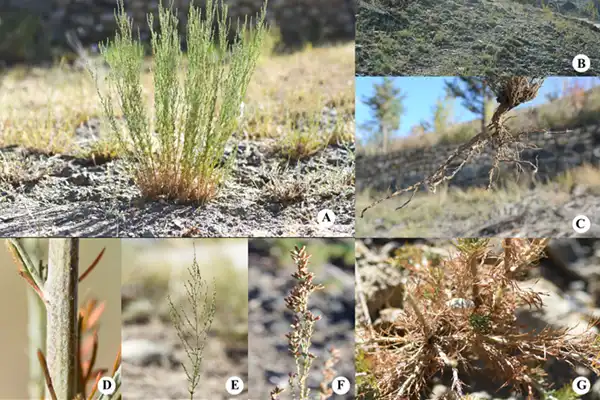Artemisia has attracted much attention due to its antimalarial properties and other pharmacological and economic value.
Researchers led by Dr. JIN Guangzhao from the Xinjiang Institute of Ecology and Geography of the Chinese Academy of Sciences and their collaborators have discovered a new species of Artemisia — Artemisia qingheensisin – in China’s Xinjiang Uygur Autonomous Region. This work was published in PhytoKeys.
The new species was discovered from Qinghe County during a field expedition in the northeast region of the Junggar Basin in 2020. Researchers revisited this site at different times in 2021 and 2022 to carry out further observations and sampling to determine the taxonomic identity of the new population.
They found that the new species has multi-layered involucral bracts and homogamous capitula with bisexual flowers. Therefore, it belongs to subgenus Seriphidium, which was further proved by phylogenetic analyses. Its hardened needle-like leaves at maturity distinguish it from morphologically similar species.
The subgenus Seriphidium, one of the most diverse taxa in Artemisia, comprises ca. 130 species and 30 infraspecific taxa worldwide. This subgenus grows mainly in arid and semi-arid regions of Central Asia and Northwest China. 31 species and six varieties have been recorded in China.
Based on additional morphological and molecular phylogenetic analyses, the researchers concluded that it is different from all other known species of Artemisia, and named it Artemisia qingheensis. The discovery of this new species not only enriches the species diversity of subgenus Seriphidium, but also has significance for the study of speciation, evolution and biogeography of Artemisia.
Read the paper: PhytoKeys
Article source: Chinese Academy of Sciences
Author: Li Yuan
Image: Morphological characteristics of Artemisia qingheensis. Credit: JIN Guangzhao






